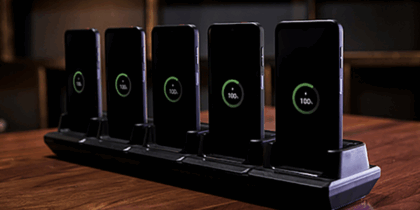At FedTalks 2018, I had the pleasure of hosting a panel on innovation through emerging technology in the public sector. The panel inspired my thoughts and reflection on government’s progress on IT modernization, as well as trends that are evolving how agencies do business in today’s increasingly mobile world.
The Current Landscape in Federal IT
Overall, government has seen progress in a number of different areas including technical collaboration, especially after the Office of Management and Budget (OMB) codified IT modernization. As a result, there’s now more dialogue between public and private-sector leaders in response to modernization requirements. On the industry side, we’ve also seen more effort in helping government advance the policy and regulations associated with such requirements.
Federal government has also made progress in adopting mobile device strategies to increase workforce productivity and enhance connectedness. The Department of Veterans Affairs (VA), for example, is using mobile endpoints in their telehealth program — making sure veterans have connected access. Mobility is increasing the ability to leverage situational awareness for defense agencies, making sure information is taken to the far edge and that warfighters have the best mobile capabilities at their fingertips. Additionally, the use of virtual reality (VR) and augmented reality (AR) are converging, allowing us to take immersive training to levels never before seen. Such new levels of immersive training not only save defense agencies training costs but also better prepare our warfighters for the most dangerous missions out there.
Looking Ahead to New Tech Trends
5G networks are going to provide exponentially more powerful federal capabilities that will continue to fuel growth. Those ecosystems that adopt 5G will realize tremendous value and more macroeconomic gain than those that don’t. With 2G, you get a greater degree of connectedness. With 3G and 4G, you put the Internet in your hand. But with 5G, you harness the power of fiber in the pocket, which can be used to empower the entire government workforce.
Coupled with the rise of 5G networks is the need to secure endpoints in the mobile ecosystem.
With Phase 3 of the Continuous Diagnostics and Mitigation (CDM) program from Department of Homeland Security (DHS) underway, DHS wants agencies to take network security to the next level by understanding what is happening on their networks. The agency is focused on helping agencies attain capabilities like network and perimeter monitoring, security of data at rest and in transit and tools to analyze user behavior and activities.
From a mobile perspective, there has been an explosion of devices and sensors, which provides more surface areas for cyber adversaries to attack. Samsung and our partners are working closely with cyber leaders to shape requirements and protect enterprise data from both external and insider threats. There’s a big push for innovation in mobile identity authentication, from biometrics to derived credentials to continuous multi-factor authentication. The federal government has an opportunity to ensure individuals are who they say they are and embrace tools that protect mission-critical data.
Pushing IT Modernization Forward
For federal government, the key to ensuring IT modernization success is pilot projects. It’s important to start small and start early. Agencies can use these pilot projects to assess value early and minimize disruptions within the enterprise. By doing so, you can garner advocacy and champions, quick wins and get tangible ROI.
Lastly, with the Technology Modernization Fund (TMF) pushed through, agencies have access to multi-year revenue for modernization infrastructure. The Modernizing Government Technology (MGT) Act will give new purpose and acceleration as agencies adopt emerging technologies like artificial intelligence (AI) and the internet of things (IoT). Samsung and industry partners are committed to the federal government to help better secure, equip and educate in moving IT modernization forward.
From here and into the next year, we look forward to continuing the dialogue between government and industry to ensure technologies evolve to meet the most important mission needs of the public sector.
Watch the rest of the video series with Chris Balcik and learn how Samsung is helping government accelerate







